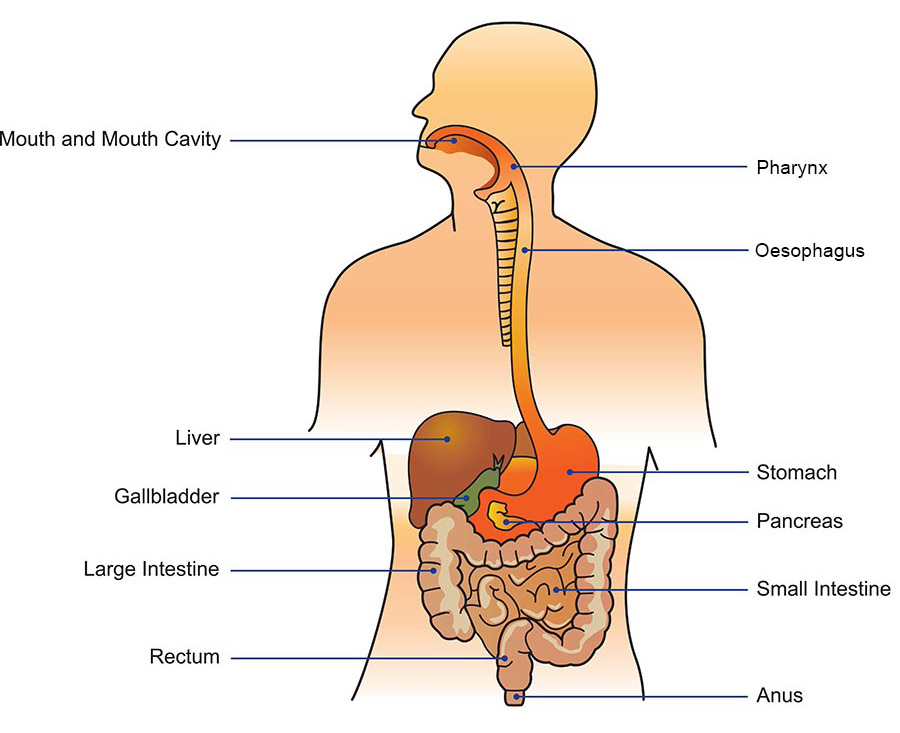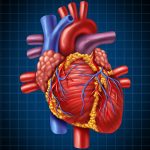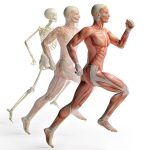
Key facts
- The digestive system breaks down food and absorbs nutrients for energy and growth.
- It is a long tube starting from your mouth, going all the way to your anus.
- Common digestive health conditions are gastro-oesophageal reflux disease (GORD), diverticulitis, stomach ulcers, and haemorrhoids.
What is the digestive system?
The digestive system is made up of the digestive tract (the gut) and other organs like the liver, pancreas and gall bladder. It is where your body breaks down food and absorbs nutrients. The digestive system is a long, twisting tube that starts at the mouth and goes through the oesophagus, stomach, small intestine, large intestine and ends at the anus.
The digestive system breaks down food into simple nutrients such as carbohydrates, fats and proteins. These can then be absorbed into your blood, so your body can use them for energy, growth and repair. Anything that isn’t used is waste, and leaves the body as faeces (poo).
How does my digestive system work?
Each organ of your digestive system has an important role in digestion.
Mouth
When you eat, your teeth chew food into small pieces. Glands in your cheeks and under your tongue make saliva that coats the food. This makes it easier to chew and swallow. Saliva also contains enzymes that start to digest the carbohydrates in food.
Oesophagus
Your oesophagus is a tube that carries food from the mouth to the stomach, after it is swallowed. A ring of muscle at the end of the oesophagus lets food into your stomach and stops stomach contents from going back up to the oesophagus.
Stomach
Your stomach breaks down food with liquid (gastric acids) to help with digestion and absorption of vitamins and minerals.
Small intestine
The small intestine of an adult is around 5 metres long and made up of many bends and folds. The large surface area helps proteins, fatty acids, sugars, vitamins and minerals pass through its wall into the blood. Most of the chemical digestion of proteins, fats and carbohydrates, happens in the small intestine.
Large intestine, rectum and anus
Your large intestine absorbs water, minerals and vitamins. Undigested fibre is mixed with mucus and bacteria, which breaks down some of the fibre to keep the large intestine healthy. Solid bowel motions (faeces, or poo) are formed and stay in the last part of the large intestine (the rectum) before leaving the body through the anus as a bowel movement.

What are common health conditions of the digestive system?
Gastro-oesophageal reflux
Gastro-oesophageal reflux disease (GORD) is when stomach content moves from the stomach back up the oesophagus. Because it is acidic, it causes a burning sensation in the chest or throat.
Diverticulitis and diverticulosis
Diverticulosis is the formation of abnormal pouches in the lower part of the large intestine, and diverticulitis is when these pouches become inflamed or infected. Diverticulosis is common from the age of 40 years and above. Around one in every 2 people over the age of 70 years have the condition.
Stomach ulcers
Stomach ulcers or peptic ulcers can be found in the stomach or the upper part of the small intestine. Helicobacter pylori (H. pylori) bacterium causes most stomach ulcers.
Haemorrhoids
Haemorrhoids are itchy or painful lumps of swollen veins in and around the anus. Haemorrhoids can cause bleeding and pain. You might notice bright red blood on the toilet paper or in the toilet. Haemorrhoids are diagnosed by a doctor examining the anus and anal canal.
When should I see my doctor?
You should speak to your doctor if you have any concerns, pain of discomfort with your digestion. See your doctor immediately if you:
- have chest pain
- continue to vomit or are vomiting blood
- symptoms stop you from eating, drinking or sleeping
- are losing weight without trying
How do I prevent digestive system problems?
You can help prevent digestive system problems by leading a healthy lifestyle. This might include the following:
- Lose weight, if you are overweight or obese.
- Follow a balanced diet.
- Drink water, avoid sugary drinks and alcohol.
- Aim for 30 minutes of exercise of physical activity every day.
- Stop smoking.



![Anatomy of bladder [For public knowledge]](https://medicine-21.com/ru/wp-content/uploads/2023/12/1445712031-g-bladder-cancer-535644945-150x150.jpg)